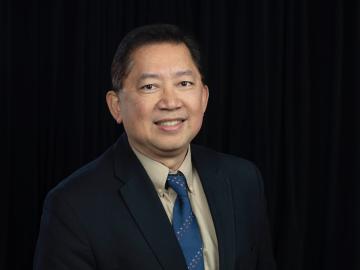Filter News
Area of Research
- Advanced Manufacturing (7)
- Biological Systems (3)
- Biology and Environment (119)
- Biology and Soft Matter (4)
- Building Technologies (3)
- Chemical and Engineering Materials (3)
- Chemistry and Physics at Interfaces (7)
- Clean Energy (208)
- Climate and Environmental Systems (7)
- Computational Biology (1)
- Computational Chemistry (5)
- Computational Engineering (2)
- Computer Science (4)
- Data (1)
- Earth Sciences (1)
- Electricity and Smart Grid (2)
- Energy Frontier Research Centers (7)
- Energy Sciences (2)
- Fuel Cycle Science and Technology (2)
- Functional Materials for Energy (10)
- Fusion and Fission (43)
- Fusion Energy (7)
- Geographic Information Science and Technology (1)
- Isotopes (24)
- Materials (186)
- Materials Characterization (2)
- Materials for Computing (17)
- Materials Synthesis from Atoms to Systems (8)
- Materials Under Extremes (8)
- National Security (52)
- Neutron Data Analysis and Visualization (2)
- Neutron Science (83)
- Nuclear Science and Technology (35)
- Quantum Condensed Matter (3)
- Quantum information Science (5)
- Renewable Energy (2)
- Sensors and Controls (2)
- Supercomputing (172)
- Transportation Systems (6)
News Type
News Topics
- 3-D Printing/Advanced Manufacturing (51)
- Advanced Reactors (12)
- Artificial Intelligence (48)
- Big Data (24)
- Bioenergy (53)
- Biology (62)
- Biomedical (32)
- Biotechnology (10)
- Buildings (22)
- Chemical Sciences (32)
- Clean Water (14)
- Climate Change (52)
- Composites (9)
- Computer Science (93)
- Coronavirus (21)
- Critical Materials (2)
- Cybersecurity (20)
- Decarbonization (45)
- Emergency (2)
- Energy Storage (43)
- Environment (113)
- Exascale Computing (24)
- Fossil Energy (4)
- Frontier (24)
- Fusion (36)
- Grid (24)
- High-Performance Computing (52)
- Hydropower (5)
- Irradiation (1)
- Isotopes (29)
- ITER (3)
- Machine Learning (21)
- Materials (70)
- Materials Science (60)
- Mathematics (5)
- Mercury (7)
- Microelectronics (2)
- Microscopy (27)
- Molten Salt (2)
- Nanotechnology (28)
- National Security (39)
- Net Zero (7)
- Neutron Science (57)
- Nuclear Energy (64)
- Partnerships (17)
- Physics (31)
- Polymers (12)
- Quantum Computing (16)
- Quantum Science (30)
- Renewable Energy (1)
- Security (13)
- Simulation (31)
- Software (1)
- Space Exploration (12)
- Summit (32)
- Sustainable Energy (47)
- Transformational Challenge Reactor (4)
- Transportation (34)
Media Contacts

Rigoberto “Gobet” Advincula, a leader in advanced materials, polymers and nanomaterials with joint appointments at ORNL and the University of Tennessee, has been named to the U.S. National Academies of Sciences, Engineering and Medicine’s Board on Chemical Sciences and Technology.

Researchers at ORNL are using a machine-learning model to answer ‘what if’ questions stemming from major events that impact large numbers of people. By simulating an event, such as extreme weather, researchers can see how people might respond to adverse situations, and those outcomes can be used to improve emergency planning.

The BIO-SANS instrument, located at Oak Ridge National Laboratory’s High Flux Isotope Reactor, is the latest neutron scattering instrument to be retrofitted with state-of-the-art robotics and custom software. The sophisticated upgrade quadruples the number of samples the instrument can measure automatically and significantly reduces the need for human assistance.

The new section of tunnel will provide the turning and connecting point for the accelerator beamline between the existing particle accelerator at ORNL’s Spallation Neutron Source and the planned Second Target Station, or STS. When complete, the PPU project will increase accelerator power up to 2.8 megawatts from its current record-breaking 1.7 megawatts of beam power.

To balance personal safety and research innovation, researchers at ORNL are employing a mathematical technique known as differential privacy to provide data privacy guarantees.

Plans to unite the capabilities of two cutting-edge technological facilities funded by the Department of Energy’s Office of Science promise to usher in a new era of dynamic structural biology. Through DOE’s Integrated Research Infrastructure, or IRI, initiative, the facilities will complement each other’s technologies in the pursuit of science despite being nearly 2,500 miles apart.

ORNL scientists contributed to a DOE technical study that found transitioning coal plants to nuclear power plants would create high-paying jobs at the converted plants and hundreds of new jobs locally.

Computational scientists at ORNL have published a study that questions a long-accepted factor in simulating the molecular dynamics of water: the 2 femtosecond time step. According to the team’s findings, using anything greater than a 0.5 femtosecond time step can introduce errors in both the dynamics and thermodynamics when simulating water using a rigid-body description.

Groundbreaking report provides ambitious framework for accelerating clean energy deployment while minimizing risks and costs in the face of climate change.

Scientists at Oak Ridge National Laboratory and six other Department of Energy national laboratories have developed a United States-based perspective for achieving net-zero carbon emissions.




